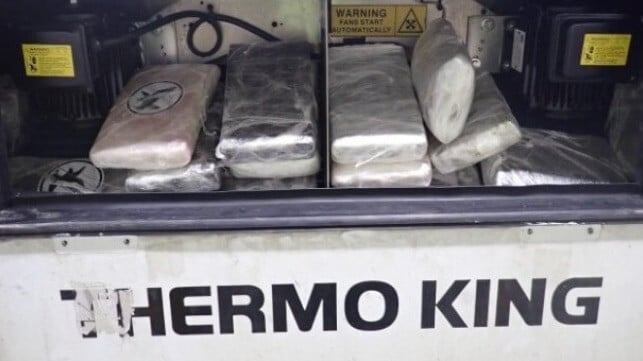Brazilian Organized Crime Groups Drive Australia's Cocaine Trade

[By Rodrigo Duton]
Australia faces an emerging national security threat from Brazilian crime groups. Once only a domestic concern in Brazil, organized crime there has evolved into a powerful narco-insurgency with transnational reach, making the country the world’s second-largest player in the cocaine trade after Colombia.
Until now, growth in Brazilian organized crime posed no threat to Australia. However, as detailed in ASPI’s newly released report, "The Pacific Cocaine Corridor: A Brazilian cartel’s pipeline to Australia," Brazil’s growing role in global cocaine supply and its expansion into new markets (including new Pacific routes), the rising sophistication of its criminal networks, and growing demand in Australia’s lucrative cocaine market are increasing the presence of Brazilian crime groups on our shores.
Brazil’s two major drug syndicates are the Primeiro Comando da Capital (PCC) and the Comando Vermelho. The PCC has become a particularly serious transnational criminal threat, exploiting weaknesses in political, legal and economic systems.
Brazil’s long coastline, abundant port facilities, unguarded inland waterways and well-developed air networks provide many channels for global cocaine distribution. Its vast 8000km border with Andean cocaine-producing countries and its 1365km of crossings with Paraguay further facilitate drug trafficking. The Triple Frontier between Brazil, Paraguay and Argentina—much like Asia’s Golden Triangle of Thailand, Myanmar and Laos—serves as a key illicit logistics hub.
Historically, cocaine sent to Australia embarked from Europe, China, South Africa, the United States or Canada, though the drugs originated in South America. Now, the PCC maintains a cocaine distribution network with connections in Oceania, using routes along the Pacific coast of South America. This means that cocaine can be routed to Australia more directly. This may reflect greater prioritization of the Australian market, and the potential for increased exports to Australia.
Brazil’s new trade route with Vanuatu, primarily for importing chicken meat, presents an increasing drug trafficking risk, as such commodities need refrigerated containers, which are harder to inspect thoroughly. The trade originates mainly from Parana, a state bordering Paraguay and a key entry point for cocaine trafficked into Brazil from Bolivia and Peru.
Vanuatu’s proximity to Australia makes it a potential transit point for illicit drug shipments. New or less scrutinized trade routes, such as the one involving Vanuatu, may have weaker customs controls, increasing the risk of undetected drug trafficking. From there, smaller vessels or yachts can transport cocaine via another Pacific island or directly to Australia, taking advantage of the region’s vast and difficult-to-monitor maritime space.
Australians pay some of the highest prices in the world for cocaine: one kilogram is valued at around AUD$3000 in Colombia, can sell for AUD$10,000 in Brazil and for between AUD$160,000-200,000 (US$100,000-125,000) in Australia. While transporting cocaine to Australia adds cost, the enormous profit margin is understandably driving expanded PCC operations.
Concealing drugs on the submerged parts of ships has become more common. Skilled divers place and receive packages at ports, often at night and without the crew’s knowledge.
In 2020, the Australian Federal Police intercepted a PCC shipment to Sydney comprising half a tonne of cocaine concealed in banana pulp bags. In 2022, a Brazilian diver was found floating and unresponsive in the Port of Newcastle near packages containing 54kg of cocaine with an estimated street value of around AUD$20 million. This case demonstrated the PCC’s ability to move people across continents and provide logistical support to buyers in Australia.
Like most organized crime groups, the PCC thrives on exploiting gaps in law-enforcement coordination, financial oversight, and in border security. Given its extensive transnational operations, a unified and coordinated effort against it is essential.
To counter the targeting of the Australian market, our report recommends that Australian and regional authorities adopt a comprehensive, strategic approach and work closely with Brazilian and international partners. Strengthening police cooperation and enhancing financial surveillance will help detect and disrupt PCC activities. Timely sharing of criminal intelligence, including travel patterns and aliases, can prevent further PCC infiltration of Australia, while stricter scrutiny of visa applications, detection of forged documents, and the establishment of watchlists will limit movement of PCC operatives. Additionally, collaboration on offender management—such as prison security, post-release monitoring, and reintegration programs—will prevent the PCC from expanding its networks within correctional systems.
By addressing key enablers of the group’s resilience and closing gaps in international information exchange, this approach not only mitigates the immediate threat but also strengthens long-term defenses against transnational organized crime.
Rodrigo Duton is an ASPI fellow and a member of the Rio de Janeiro State Police. Raelene Lockhorst, who assisted in writing this article, is deputy director of national security programs at ASPI.
The opinions expressed herein are the author's and not necessarily those of The Maritime Executive.
